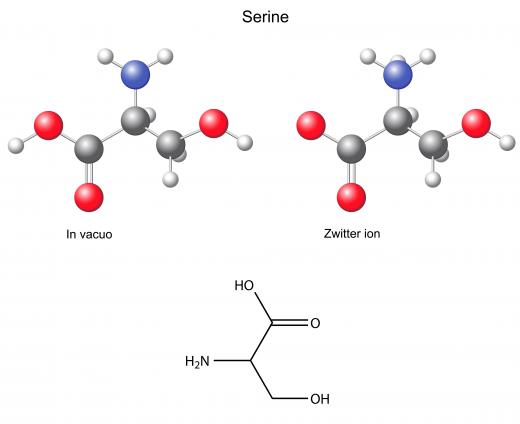What Is Kinase Phosphorylation?
Kinases are catalyst enzymes that transfer phosphate groups from a high-energy molecule to a substrate. This transfer of phosphate groups is called kinase phosphorylation. Important cellular processes are turned on and off by kinase phosphorylation. Failure for this system to operate properly can lead to abnormal cell behavior, which can cause the growth of cancer cells.
Enzymes act as catalysts to speed the rate of chemical reactions. Kinase phosphorylation involves protein kinases that exist above and within the cell membrane. The phosphorylation takes place at the intracellular level.

A phosphate group is removed during kinase phosphorylation. Phosphate groups contain a central atom of phosphate surrounded by four atoms of oxygen. The group is taken from a coenzyme such as adenosine triphosphate (ATP). This coenzyme has three phosphate groups and binds well with proteins.
The kinase phosphorylation process steers the phosphate group toward specific amino acid substrates. Located outside the cell membrane, these amino acids have open hydroxyl groups that allow the phosphate group to attach. Serine, threonine and tyrosine are the potential substrates for protein kinase.
There are kinases that can attach only to one specific substrate and others that can attach to all three at one time. Serine is the most commonly used substrate. The specific kinases are named after their matching substrates, such as tyrosine kinase, which fits into the tyrosine substrate.
The extracellular kinase binding sites around the amino acids also include growth factor proteins. Initialization and regulation of cell cycles involve growth factors. Kinase and growth factors operate cellular actions much like an on and off switch.
The addition of the phosphate group during kinase phosphorylation changes the shape and actions of the protein. This turns on, or activates, the cellular action. When the action completes, the added phosphate group is removed to turn off the action. A mutated kinase can disrupt this process and cause the cellular actions to become unregulated.
A dysfunction of tyrosine kinase receptors during the kinase phosphorylation process can lead to uncontrolled cell division and growth. This has the potential to cause the growth of oncogenes that turn normal cells into cancerous cells. There is a class of cancer medications called tyrosine kinase inhibitors that work to block malfunctions in the tyrosine kinase that cause oncogenes.
AS FEATURED ON:
AS FEATURED ON:











Discuss this Article
Post your comments